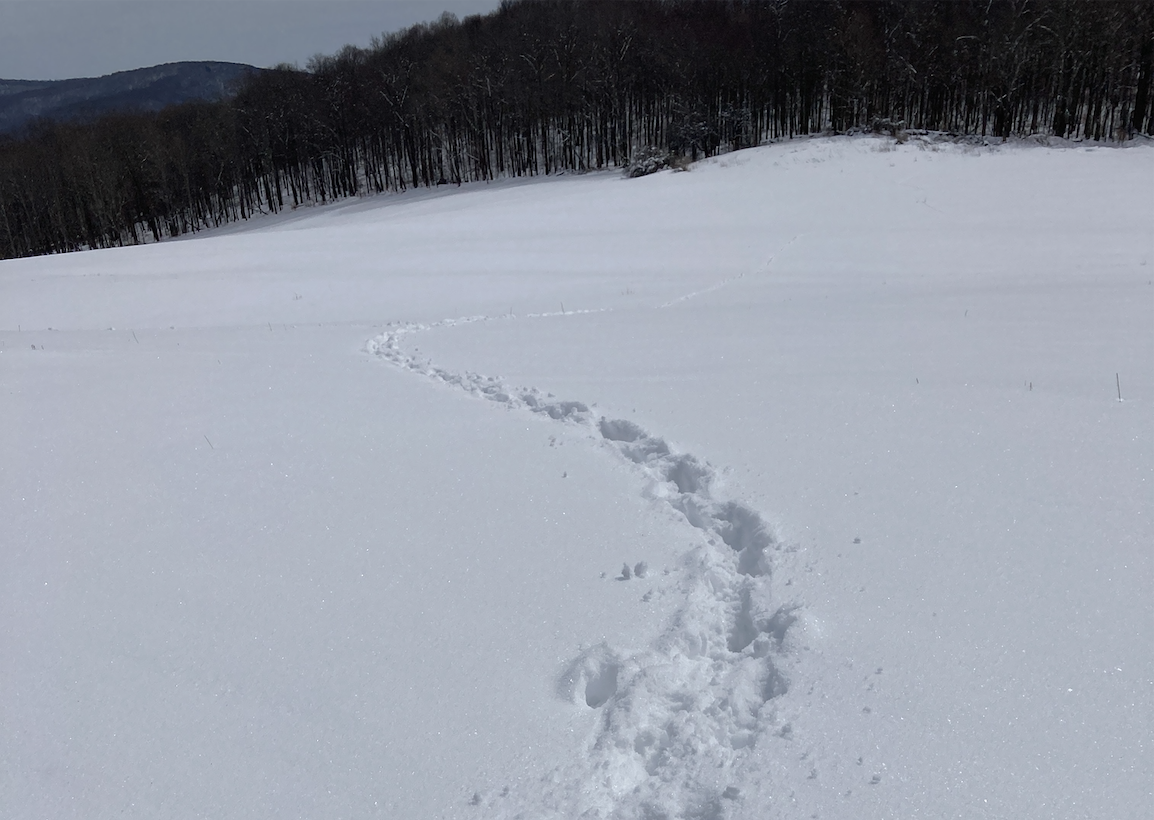Nature Notes ~ Observations from The Uplands Center’s Environmental Director
While it is true that winter is a season of dormancy in the northeast, there is one form of wildlife activity that is perhaps best seen this time of year. Snow provides a great opportunity for finding animal tracks. Learning some basic patterns in tracking can help you get to know your nearby furry friends!
First, notice the track pattern (general gait or way of walking) that the animal shows. From there, the finer details in the footprints can help determine which species left them behind.
Perfect Steppers

This track pattern is created when animals step their hind foot directly on the track on their front foot. Animals such as deer, moose, felines, and canines walk in this manner.
At The Uplands Center, we find more tracks from deer than any other animal. If the track has a distinct hoof shape to it, and it is around 3 inches or smaller, you’re looking at a deer track! Notice if you see any large areas of snow packed down nearby – deer commonly rest on the ground with their group.
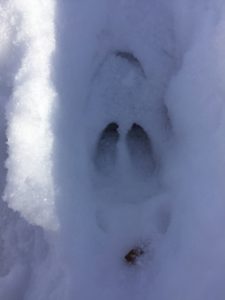
If you see a large paw print with a “perfect stepper” walking pattern in our area, it’s likely either a coyote or a bobcat (or a neighborhood cat/dog!). To tell the difference between canines (such as coyotes) or felines (such as bobcats), notice if there are any imprints directly above each paw pad, indicating a claw. If you see these claw marks, you’re looking at a canine track. Felines keep their claws retracted until they need them. Feline tracks are also more distinctively circular, compared to an oval impression that canines leave behind.
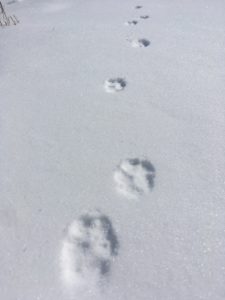
Waddlers

This pattern of “left-left, right-right” come from animals such as raccoons, bears, porcupines, beavers, opossums, and muskrats. These creatures lumber from side-to-side, moving one side of their body at a time. Here are two different examples of waddlers found at The Uplands:
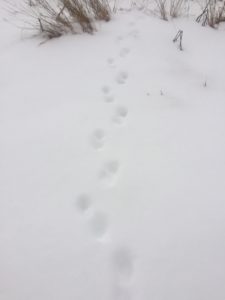
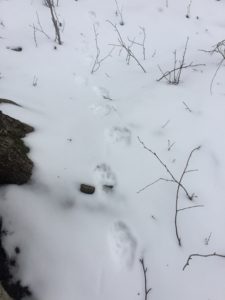
It is difficult to see much detail on the first photo, so we can only guess as to what animal left those tracks. The second offers a chance for some investigation.

Upon closer inspection of the waddler, we noticed that the hind leg measured around 3 inches, meaning the animal was relatively mid-sized for a waddler. This information, coupled with the fact that we had seen one specific waddler in a nearby tree recently, led us to believe that we found a porcupine track.
Bounders

Animals such as otters, weasels, and fisher cats leave side-by-side tracks. We noticed some bounding tracks in The Uplands Center woods, but haven’t identified the species. Leave your guess in the comment section below!
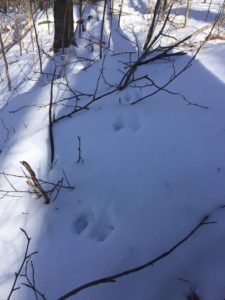
Hoppers

Finally, the main two hoppers we see around Uplands are squirrels and rabbits. The smaller tracks in the back are actually the animal’s front paws; their back feet land ahead before they leap once more. If the smaller tracks are exactly side-by-side, it’s likely a squirrel. If they are staggered, like in the pattern above and below, a rabbit has been near!
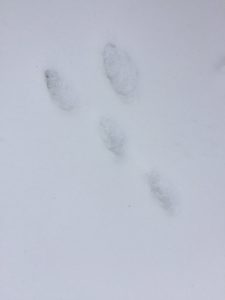
It’s easy to keep your activities inside during the winter, but tracking offers a great chance to embrace the weather and get outdoors! See what you can find in your own backyard.



